Ethnobotany of the
Big Bear Lake area, California
Part 4
|
Tragopogon dubius - Goatsbeard
The root is edible raw (slightly bitter, celery-like taste with a hint
of cucumber) and cooked (smells like parsnips). The plant exudes a milky
latex when cut. |
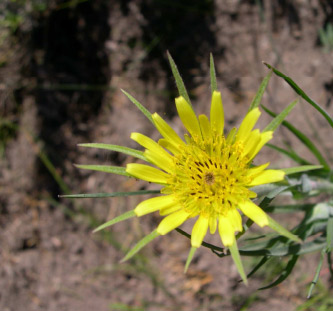 |
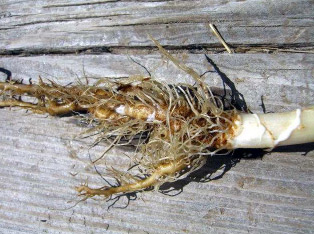 |
| |
|
|
| |
Trifolium variegatum
Trifolium wormskioldii
Clover
The whole plant is edible (and tasty) raw and cooked. |
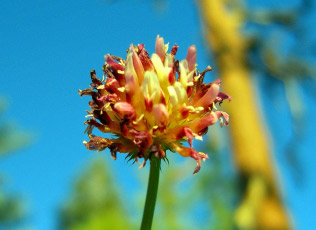 |
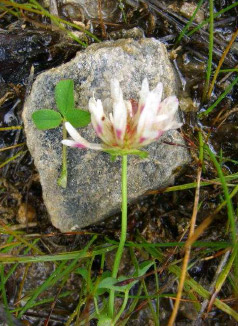 |
| |
Typha latifolia - Cattail
The immature flowering spike, mature stem-base, pollen and root are
edible raw and cooked (see root preparation method above). The
seed-fluff makes excellent starting tinder for fires (generated a
longlasting ember). The inner stem can be soaked in oil (along with the
seed-head) and used as a torch. A pinch of seed-fluff makes an excellent
oil lamp wick. |
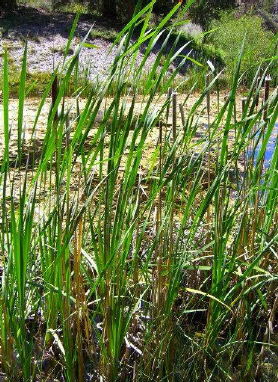 |
|
|
| |
Urtica dioica - Stinging Nettle
The young leaves and stems are deliciously edible when cooked--tastes
like spinach. To remove the stinging hairs, just boil (the hairs
disintegrate). The plant is high in iron and Vitamins A and C. A tea
(blood purifier) can be made from the whole plant, which can be consumed
or given to houseplants - very nutritional. The leaf juice (applied
topically) counteracts the sting of the hairs. The leaves (with stinging
hairs) can be rubbed onto arthritic and rheumatic joints to promote
blood flow to the area. The root, when consumed raw, has been shown to
benefit an enlarged prostate gland. |
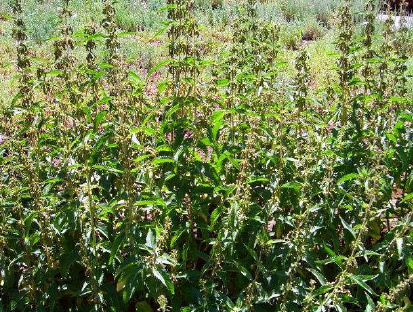 |
| |
| Grasses, Sedges and Rushes
Avena fatua - Wild Oats
The seed is edible after burning the awns off, lightly pounding the seed
to remove the chaff, and then roasting or boiling [this is the
processing necessary for all the grasses below]. |
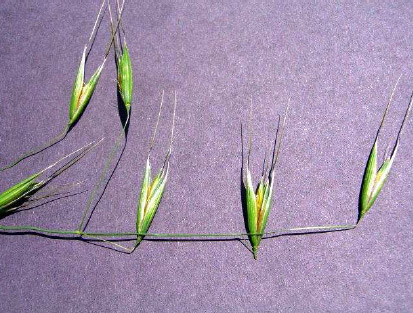 |
| |
Bouteloua gracilis - Blue Grama Grass
The seed is edible. Chewed roots can be placed on cuts to promote
healing. The stems have been used as the fill in coiled basketry. |
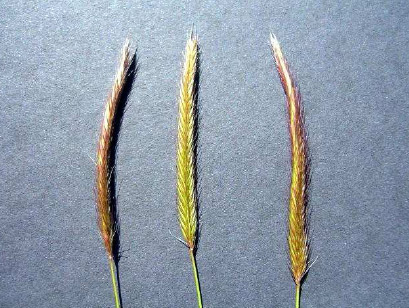 |
| |
Bromus sp. - Brome Grass
The seed is edible. |
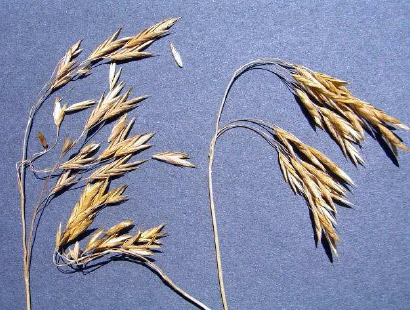 |
| |
Elymus sp. (triticoides?) - Rye Grass
The seed is edible. |
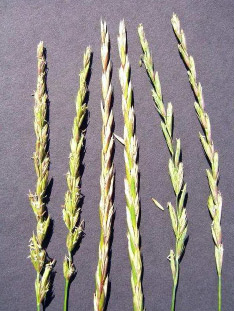 |
| |
Carex sp. - Sedge
Thee roots, seeds and stem-bases are edible raw and cooked. The white
inner-root is used in basketry. |
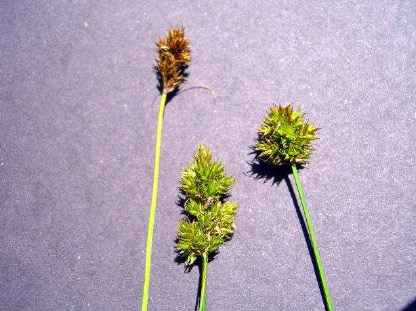 |
| |
Cyperus sp. - Sedge
The seed is edible when cooked. |
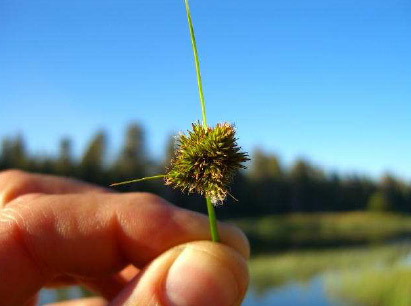 |
| |
Deschampsia sp. - Hair Grass
The seed is edible. |
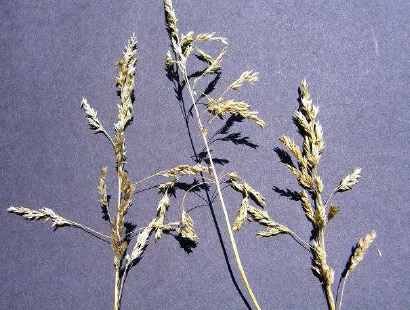 |
| |
Eleocharis sp. - Spike Rush
The seed is edible when cooked. |
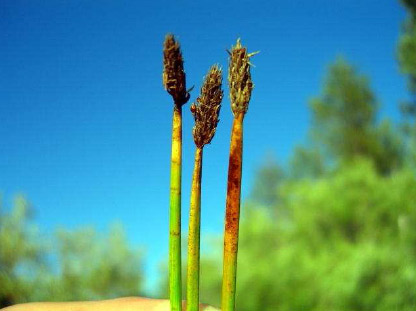 |
| |
Elymus elymoides - Squirrel-Tail Grass
The seed is edible. The stems are used to make rope and mats. |
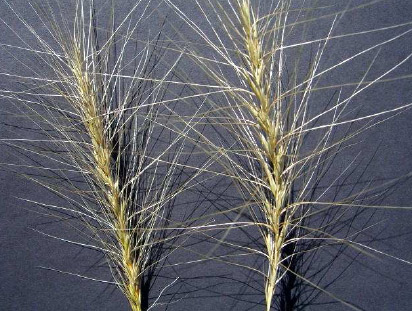 |
| |
Equisetum laevigatum - Scouring Rush
As its common name implies, this plant is quite effective in scouring
your camp pots and pans. While tedious, the young shoots can be peeled
and eaten raw, before the plant uptakes silica, gold and other minerals
and incorporates them into its tissues—presumably to ward off
herbivores. I have made a pan flute out of the stems. |
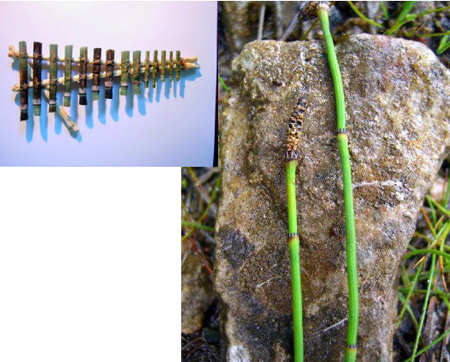 |
| |
Hordeum brachyantherum ssp californicum - Wild Barley
Seeds can be ground-up (after burning off the long awns and removing the
chaff via light pounding) and eaten raw and cooked (added to bread, made
into porridge). The roasted seeds can be a coffee substitute, although
they taste more nutty than coffee-like. |
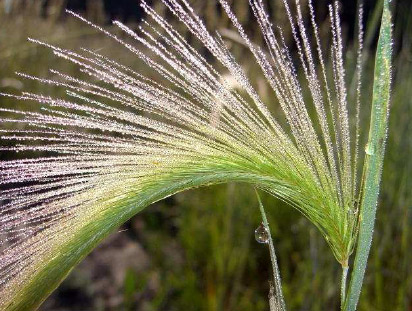 |
| |
Juncus arcticus var. balticus - Baltic Rush
The seed is edible. The stems are used to make rope and mats. |
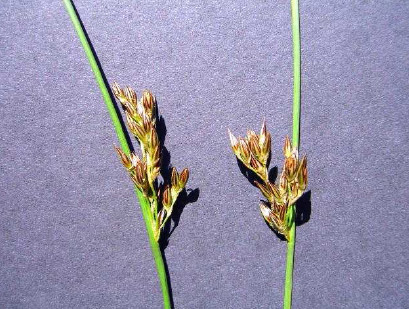 |
| |
Muhlenbergia filiformis - Dropseed Grass
The seed is edible. Since the seeds are so tiny, I’ve just shucked all
vegetative material off the stem with my fingernail and have eaten that. |
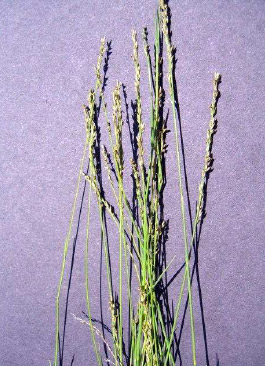 |
| |
Oryzopsis hymenoides - Indian Rice Grass
The seed is edible raw and cooked (nutty taste). |
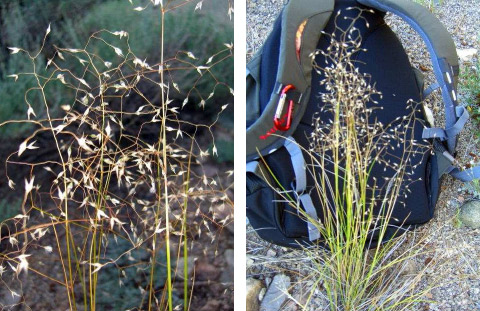 |
| |
Phalaris sp. - Canary Grass
The seed is edible. |
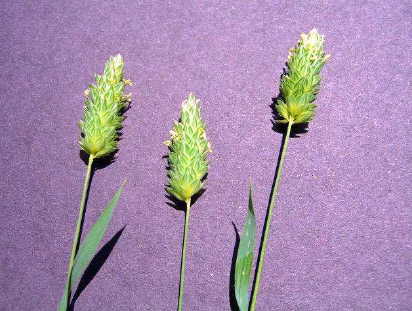 |
| |
Poa sp. - Bluegrass
The seed is edible, as are the base of the stems. |
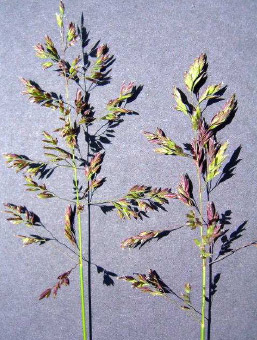 |
| |



